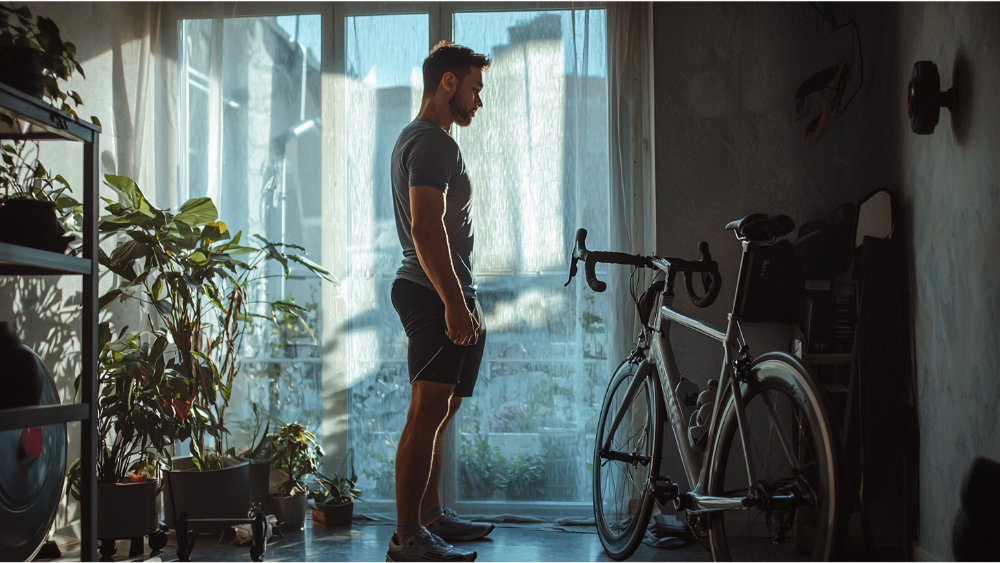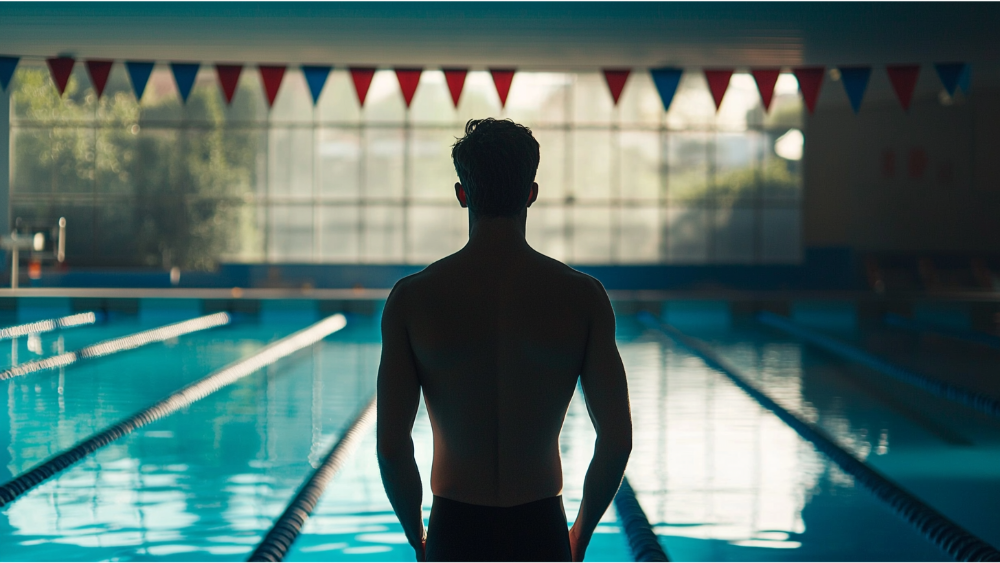Preparing for an Ironman triathlon is a monumental task. It requires not just physical preparation but also mental, emotional, and strategic planning. The Ironman race covers 2.4 miles of swimming, 112 miles of biking, and a full 26.2-mile marathon run. To conquer this endurance event, you need a methodical approach that ensures your readiness for race day and minimizes the risk of injury or burnout.
In this guide, we’ll cover essential steps for how to prepare for Ironman training, so you can confidently tackle the journey ahead.
Understanding the Challenge of an Ironman
What is an Ironman Triathlon?
An Ironman triathlon is one of the most grueling endurance events in the world, requiring participants to complete a 2.4-mile swim, 112-mile bike ride, and 26.2-mile run consecutively. The cumulative distance of 140.6 miles must be completed in under 17 hours, with each segment testing different aspects of endurance, strength, and mental resilience.
Each phase of the Ironman requires balanced training to improve technique, build endurance, and develop the mental fortitude needed to push through the inevitable moments of fatigue and self-doubt.
Physical and Mental Requirements
Success in an Ironman triathlon isn’t just about physical fitness—it’s a test of mental toughness. Before you embark on Ironman training, it’s important to evaluate both your physical and mental readiness. Can you swim a mile, bike 30 miles, and run six miles in separate sessions without issue? If yes, you likely have a good foundation to start.
Mentally, prepare yourself for the highs and lows of training. There will be days when exhaustion and doubt set in, but learning to push through these challenges is critical for both training and race day.
Structuring Your Ironman Training Plan

Base Phase (12-16 Weeks)
The base phase of Ironman training spans 12 to 16 weeks and focuses on building a strong aerobic foundation in all three disciplines—swimming, biking, and running. This phase is characterized by low to moderate-intensity workouts with gradually increasing durations. The goal is to build endurance and improve technique while laying the groundwork for more intense training later on.
Key Workouts in the Base Phase
- Swimming: Focus on long, slow-distance swims, emphasizing breathing and stroke efficiency. Incorporate drills that help you glide through the water with minimal effort, conserving energy for the rest of the race.
- Cycling: Start with steady, long rides. Aim to increase the distance slowly over time while maintaining a consistent pace to build endurance and lower body strength.
- Running: During the base phase, low-intensity, long runs are essential. Focus on pacing yourself and gradually increasing your weekly mileage.
Strength Training
Incorporate two to three strength-training sessions per week. Focus on core stability and leg strength, as these muscle groups will support you throughout all three segments of the race. Including exercises like squats, lunges, and planks will enhance your overall performance and help reduce the risk of injury.
Build Phase (8-10 Weeks)
The build phase introduces more intensity and volume into your workouts. You’ll start incorporating speed work and intervals, pushing your body to adapt to race-specific conditions. This phase is designed to improve your strength and endurance, ensuring you can handle the longer, more intense workouts leading up to race day.
Key Workouts in the Build Phase
- Swimming: Add interval-based sessions into your swim workouts to build speed and endurance. Focus on race-pace efforts with shorter rest intervals to simulate the intensity of race day.
- Cycling: Include hill climbs and interval sessions to increase your strength and power output. Brick workouts, where you follow a bike session with a run, are especially useful during this phase to prepare your body for the unique demands of transitioning between disciplines.
- Running: Tempo runs and interval training will improve your running efficiency and speed. Gradually increase the intensity while focusing on maintaining good form and avoiding injury.
Peak Phase (2-3 Weeks)

During the peak phase, you’ll focus on reaching your highest level of fitness. The intensity of workouts remains high, but the overall volume decreases slightly to allow for recovery between sessions. This phase involves race-specific training that simulates the physical and mental challenges of the Ironman.
Long Swim-Bike-Run Simulations
This is the time to engage in race simulations. Aim for a long swim followed by a long bike ride and finish with a run. These sessions will help you fine-tune your nutrition strategy, identify any gear issues, and practice pacing yourself for race day.
Taper Phase (2-3 Weeks)
In the taper phase, your focus shifts to recovery. The volume of your training decreases significantly, allowing your body to recover and repair while keeping your intensity levels relatively high. This ensures you maintain your fitness without over-exerting yourself just before the race.
Mental Preparation During the Taper
During the taper, it’s natural to feel restless or anxious. Use visualization techniques to mentally prepare for race day. Picture yourself successfully completing each segment and handling any challenges that arise calmly and efficiently.
Mastering Each Discipline

Swimming Preparation
Swimming is often the most daunting segment for many Ironman athletes, especially if you’re unfamiliar with open water. Transitioning from a pool to an open-water swim can be challenging, but regular practice in open water will help you become more confident.
Swim Technique and Stroke Efficiency
Focus on improving stroke efficiency to conserve energy during the swim. Techniques such as bilateral breathing (breathing on both sides) and long, controlled strokes will help you reduce drag and fatigue over the 2.4-mile distance.
Biking Preparation
The bike leg is the longest portion of the race, and being comfortable on your bike is essential. Proper bike fit is critical to avoid discomfort or injury during long training sessions and race day.
Training on Various Terrains
Incorporate rides on varied terrain to build your climbing and descending skills. This will prepare you for any elevation changes on race day and help develop strength in your legs. Incorporate long, steady rides along with interval-based hill climbs to maximize power.
Running Preparation
Running a full marathon after hours of swimming and biking is an immense challenge, and the key to success lies in your pacing and stamina.
Pacing Strategies and Injury Prevention
When running, pay attention to your pacing. Start your long runs slower and gradually increase your speed. This helps build endurance without overwhelming your body. Focus on proper form, and include core and leg-strength exercises to prevent common overuse injuries like runner’s knee or Achilles tendonitis.
Importance of Recovery in Ironman Training
Rest Days and Active Recovery
Recovery is a vital part of Ironman training. Plan for at least one full rest day per week and incorporate active recovery sessions like yoga, swimming, or light cycling. These activities will help you stay loose and limber while aiding in muscle recovery.
Overtraining and Its Risks
Overtraining can lead to injury, burnout, or even illness. Signs of overtraining include chronic fatigue, irritability, and an inability to recover from workouts. If you notice these symptoms, scale back your training and prioritize rest to prevent long-term setbacks.
Nutrition and Hydration Strategy for Ironman Training

Daily Nutrition Needs
Proper nutrition is key to successful Ironman training. Make sure you’re fueling your body with the right balance of carbohydrates, proteins, and fats. Carbohydrates should make up a significant portion of your daily intake as they provide the energy needed for long training sessions.
Sample Meal Plan for Training Days
- Breakfast: Oatmeal with almond butter, bananas, and chia seeds
- Lunch: Grilled chicken with quinoa, spinach, and roasted vegetables
- Dinner: Salmon with brown rice, steamed broccoli, and sweet potatoes
- Snacks: Energy bars, fruit smoothies, and trail mix
Fueling During Long Workouts
During long training sessions, it’s crucial to fuel your body with the right nutrition to maintain energy levels. Consume energy gels, bars, or electrolyte drinks during sessions longer than 90 minutes. Plan to take in 60-90 grams of carbohydrates per hour to keep your body fueled.
Hydration Strategies
Staying hydrated is essential, especially during long training sessions. Drink water regularly, and for sessions lasting more than an hour, consider electrolyte drinks to replenish lost sodium and potassium.
Mental Preparation for an Ironman
Overcoming Mental Barriers
Training for an Ironman is as much a mental challenge as a physical one. Visualization techniques can help you stay focused and motivated throughout the long months of training. Break the race into smaller, more manageable segments, and imagine yourself successfully completing each one.
Managing Pre-Race Anxiety
It’s normal to feel nervous in the weeks leading up to the race. Practice mindfulness or meditation to help manage stress, and trust in the months of hard work and preparation you’ve put in.
Gear Checklist for Ironman Training and Race Day
Essential Swim Gear
- Wetsuit: Essential for buoyancy and warmth in colder open water
- Goggles: Ensure a snug fit to avoid fogging or leaking
- Swim Cap: Helps reduce drag and makes you more visible in open water
Essential Biking Gear
- Triathlon-Specific Bike: Ideal for long-distance cycling and speed
- Helmet and Shoes: Invest in a high-quality helmet and comfortable cycling shoes for optimal performance and safety
Essential Running Gear
- Running Shoes: Proper running shoes that fit your gait and foot structure will help prevent injuries and improve comfort.
- Compression Gear: Helps reduce muscle fatigue during long runs
Race Day Strategy

Transition Planning (T1 and T2)
Transitions are often referred to as the “fourth discipline” in triathlons. Practice efficient transitions between swimming and biking (T1), and biking and running (T2). Small adjustments, like organizing your gear, can save valuable minutes.
Pacing Strategy for Race Day
Pacing is one of the most critical aspects of successfully completing an Ironman. Start conservatively during each discipline to avoid burnout later in the race. Many athletes struggle during the marathon because they pushed too hard on the bike, so aim for steady, even pacing across all three legs.
Common Mistakes and How to Avoid Them
Overtraining and Burnout
It’s easy to overtrain when preparing for an Ironman, but this often leads to burnout or injury. Stick to your training plan, listen to your body, and take rest days seriously to avoid these pitfalls.
Nutrition Mistakes
Don’t try new foods or supplements on race day. Always test your nutrition plan during training sessions to ensure that it works for you and doesn’t cause gastrointestinal distress or energy crashes.

Leave a Reply